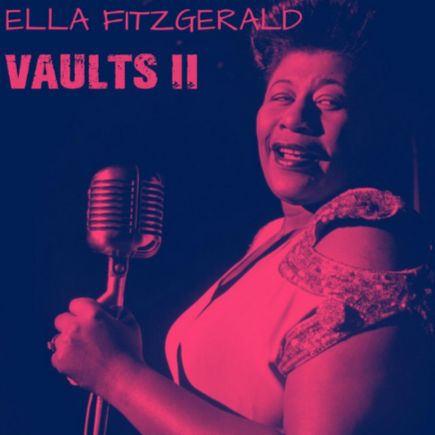Basin Street Blues: mémoire vivante de La Nouvelle-Orléans
Composé en 1926 par Spencer Williams, Basin Street Blues s’impose rapidement comme un standard emblématique du jazz dixieland. C’est l’interprétation magistrale de Louis Armstrong et ses Hot Five, enregistrée le 4 décembre 1928, qui en fait une œuvre fondatrice, marquant un jalon décisif dans l’évolution du jazz.
Le titre fait directement référence à Basin Street, artère centrale de Storyville – le légendaire quartier chaud du Vieux Carré français à La Nouvelle-Orléans. Cet espace bouillonnant de vie nocturne, de clubs animés et de maisons closes a vu naître les premières grandes figures du jazz, dont Armstrong lui-même et Jelly Roll Morton. Dans ce contexte, Basin Street Blues ne se limite pas à une chanson: elle incarne un pan entier de l’histoire culturelle américaine.
Sur le plan musical, la pièce brille par sa capacité à conjuguer expressivité et improvisation. Son thème principal, doux et mélancolique, est souvent confié à la trompette ou au cornet – instruments phares du jazz néo-orléanais – conférant à chaque interprétation une chaleur émotive particulière.
La postérité de Basin Street Blues est remarquable: au-delà des quelque cinquante enregistrements laissés par Armstrong, la chanson a été reprise des centaines de fois et figure dans la bande sonore de films aussi variés que The Glenn Miller Story (Anthony Mann), Casino (Martin Scorsese) ou The Curious Case of Benjamin Button (David Fincher).
Ella Fitzgerald, un hommage raffiné aux racines du jazz
Le 20 septembre 1949, à New York, Ella Fitzgerald enregistre une version mémorable de Basin Street Blues avec l’orchestre de Sy Oliver. Ce classique du jazz, fortement associé à Louis Armstrong, prend ici une dimension nouvelle, à la croisée des héritages de la Nouvelle-Orléans et des aspirations du jazz d’après-guerre.
Fitzgerald réinvente le morceau avec une élégance sobre, alliant sensibilité et maîtrise. Dès les premières mesures, sa voix incarne l’esprit du sud tout en l’inscrivant dans une esthétique contemporaine, plus urbaine. Dans le dernier refrain, elle rend un hommage direct à Armstrong en imitant son timbre distinctif — clin d’œil affectueux qui pousse le label Decca à publier le disque sous le nom Ella ‘Satchmo’ Fitzgerald.
Cet enregistrement s’inscrit dans une période charnière. Le bebop est alors en plein essor, remettant en question les formes du swing. Pourtant, Fitzgerald parvient à maintenir un équilibre subtil entre tradition et innovation. Elle conserve l’ancrage rythmique du swing tout en explorant des libertés stylistiques plus modernes.
Sa performance se distingue par la souplesse du phrasé, la finesse des modulations et une capacité rare à jouer sur les nuances de la mélodie. Le passage en scat révèle sa virtuosité et une créativité sans ostentation. L’orchestre de Sy Oliver, avec ses cuivres nuancés et ses rythmes syncopés, soutient cette réinterprétation avec une grande cohérence, apportant profondeur et élégance.
Basin Street Blues: memoria viva de Nueva Orleans
Compuesta en 1926 por Spencer Williams, Basin Street Blues se impone rápidamente como un estándar emblemático del jazz dixieland. La interpretación magistral de Louis Armstrong y sus Hot Five, grabada el 4 de diciembre de 1928, la convierte en una obra fundacional y en un hito clave en la evolución del jazz.
El título hace referencia directa a Basin Street, arteria central de Storyville —el legendario distrito rojo del Barrio Francés de Nueva Orleans—. Esta zona, vibrante de vida nocturna, clubes animados y casas de citas, fue el escenario donde surgieron algunas de las primeras grandes figuras del jazz, incluido el propio Armstrong, así como Jelly Roll Morton. En este contexto, Basin Street Blues no es solo una canción: encarna una parte fundamental de la historia cultural estadounidense.
Musicalmente, la pieza destaca por su capacidad de conjugar expresividad e improvisación. Su tema principal, suave y melancólico, suele interpretarse con trompeta o corneta —instrumentos emblemáticos del jazz de Nueva Orleans—, aportando a cada versión una calidez emocional particular.
La posteridad de Basin Street Blues es notable: más allá de los aproximadamente cincuenta registros realizados por Armstrong, la canción ha sido versionada cientos de veces y forma parte de la banda sonora de películas tan diversas como The Glenn Miller Story (Anthony Mann), Casino (Martin Scorsese) o The Curious Case of Benjamin Button (David Fincher).
Ella Fitzgerald, un homenaje refinado a las raíces del jazz
El 20 de septiembre de 1949, en Nueva York, Ella Fitzgerald graba una versión memorable de Basin Street Blues junto a la orquesta de Sy Oliver. Este clásico del jazz, estrechamente vinculado a Louis Armstrong, adquiere aquí una nueva dimensión, en el cruce entre la herencia de Nueva Orleans y las aspiraciones del jazz de posguerra.
Fitzgerald reinventa el tema con una elegancia sobria, combinando sensibilidad y dominio técnico. Desde los primeros compases, su voz encarna el espíritu del sur, pero dentro de una estética contemporánea, más urbana. En el último estribillo, rinde homenaje directo a Armstrong imitando su timbre característico, un gesto afectuoso que llevó al sello Decca a publicar el disco con el nombre de Ella ‘Satchmo’ Fitzgerald.
Esta grabación se sitúa en un momento crucial. El bebop domina la escena y desafía las formas tradicionales del swing. Sin embargo, Fitzgerald logra mantener un equilibrio sutil entre tradición e innovación. Conserva el anclaje rítmico del swing mientras explora nuevas libertades estilísticas.
Su interpretación destaca por la flexibilidad del fraseo, la delicadeza de las modulaciones y una capacidad poco común para jugar con los matices melódicos. El pasaje de scat revela su virtuosismo y una creatividad sin exhibicionismo. La orquesta de Sy Oliver, con sus metales matizados y sus ritmos sincopados, acompaña esta relectura con gran coherencia, aportando profundidad y elegancia.
Basin Street Blues: memoria vivente di New Orleans
Composta nel 1926 da Spencer Williams, Basin Street Blues si afferma rapidamente come uno degli standard più rappresentativi del jazz dixieland. È l’interpretazione magistrale di Louis Armstrong e dei suoi Hot Five, incisa il 4 dicembre 1928, a consacrarla come un’opera fondativa e una tappa decisiva nell’evoluzione del jazz.
Il titolo fa riferimento diretto a Basin Street, arteria principale di Storyville —lo storico quartiere a luci rosse del Vieux Carré di New Orleans—. Questo luogo, pulsante di vita notturna, club affollati e case di appuntamenti, fu la culla di alcune tra le prime grandi figure del jazz, come lo stesso Armstrong e Jelly Roll Morton. In questo contesto, Basin Street Blues non è solo una canzone: rappresenta un’intera pagina della storia culturale americana.
Dal punto di vista musicale, il brano si distingue per la sua capacità di unire espressività e improvvisazione. Il tema principale, dolce e malinconico, è spesso affidato alla tromba o al cornetto —strumenti simbolo del jazz di New Orleans—, conferendo a ogni interpretazione un’intensità emotiva particolare.
La fortuna di Basin Street Blues è eccezionale: oltre alla cinquantina di registrazioni lasciate da Armstrong, il brano è stato reinterpretato centinaia di volte e compare nelle colonne sonore di film molto diversi tra loro, come The Glenn Miller Story (Anthony Mann), Casino (Martin Scorsese) o The Curious Case of Benjamin Button (David Fincher).
Ella Fitzgerald, un omaggio raffinato alle radici del jazz
Il 20 settembre 1949, a New York, Ella Fitzgerald incide una versione memorabile di Basin Street Blues con l’orchestra di Sy Oliver. Questo classico del jazz, strettamente legato a Louis Armstrong, assume qui una nuova dimensione, al crocevia tra l’eredità di New Orleans e le aspirazioni del jazz del dopoguerra.
Fitzgerald reinterpreta il brano con un’eleganza sobria, unendo sensibilità e padronanza tecnica. Fin dalle prime battute, la sua voce evoca lo spirito del sud, pur iscrivendosi in un’estetica più urbana e moderna. Nell’ultimo ritornello, rende un omaggio diretto ad Armstrong imitando il suo timbro inconfondibile, un gesto affettuoso che spinse l’etichetta Decca a pubblicare il disco con il nome di Ella ‘Satchmo’ Fitzgerald.
Questa registrazione si colloca in un periodo di svolta. Il bebop è in piena ascesa e mette in discussione le forme tradizionali dello swing. Eppure, Fitzgerald riesce a mantenere un equilibrio sottile tra tradizione e innovazione, conservando il radicamento ritmico dello swing e aprendo nuove possibilità espressive.
La sua interpretazione si distingue per la flessibilità del fraseggio, la finezza delle modulazioni e una rara capacità di giocare con le sfumature melodiche. Il passaggio in scat rivela la sua virtuosità e una creatività priva di ostentazione. L’orchestra di Sy Oliver, con i suoi ottoni sfumati e i ritmi sincopati, sostiene questa rilettura con grande coerenza, aggiungendo profondità ed eleganza.
Basin Street Blues: a living memory of New Orleans
Composed in 1926 by Spencer Williams, Basin Street Blues quickly established itself as a defining standard of Dixieland jazz. It was the masterful rendition by Louis Armstrong and his Hot Five, recorded on December 4, 1928, that cemented its place as a foundational work and a decisive milestone in the evolution of jazz.
The title refers directly to Basin Street, the main artery of Storyville—the legendary red-light district in the French Quarter of New Orleans. This vibrant area, alive with nightlife, bustling clubs, and brothels, was the cradle of early jazz legends such as Armstrong himself and Jelly Roll Morton. In this context, Basin Street Blues is far more than a song: it stands as a vital chapter in American cultural history.
Musically, the piece is distinguished by its seamless blend of expressiveness and improvisation. Its main theme, gentle and melancholic, is often played on the trumpet or cornet—signature instruments of New Orleans jazz—bringing an emotional warmth to every performance.
The legacy of Basin Street Blues is remarkable: beyond the fifty or so recordings left by Armstrong, the song has been covered hundreds of times and appears in the soundtracks of films as diverse as The Glenn Miller Story (Anthony Mann), Casino (Martin Scorsese), and The Curious Case of Benjamin Button (David Fincher).
Ella Fitzgerald, a refined tribute to the roots of jazz
On September 20, 1949, in New York, Ella Fitzgerald recorded a memorable version of Basin Street Blues with Sy Oliver’s orchestra. This jazz classic, closely associated with Louis Armstrong, takes on a new dimension here—at the intersection of New Orleans heritage and postwar jazz aspirations.
Fitzgerald reimagines the piece with understated elegance, blending emotional sensitivity with technical command. From the opening bars, her voice evokes the spirit of the South while adopting a more modern, urban aesthetic. In the final chorus, she pays direct tribute to Armstrong by imitating his distinctive timbre—a warm gesture that led Decca to release the recording under the name Ella ‘Satchmo’ Fitzgerald.
This performance came at a pivotal moment. Bebop was in full swing, challenging the established forms of swing jazz. Yet Fitzgerald managed to strike a delicate balance between tradition and innovation. She retained the rhythmic foundation of swing while incorporating freer, more modern stylistic choices.
Her rendition stands out for its supple phrasing, nuanced modulations, and an exceptional ability to play with melodic shading. The scat passage reveals her virtuosity and a creativity free of showiness. Sy Oliver’s orchestra, with its subtle brass and syncopated rhythms, supports the interpretation with remarkable coherence, adding depth and elegance.


